



As India deals with the prospect of staying and working from home for much longer, one thing is quite evident: we are not just experimenting more with our cooking, but also with our baking.
One of the frontrunners in the ‘baking under quarantine’ trend is bread. While people’s Instagram feeds and Facebook profiles are flush with images of all sorts of bread, an unusual sighting is a sourdough. The last I checked, the #sourdough hashtag threw up 3.5 million posts on Instagram, some of them from India.
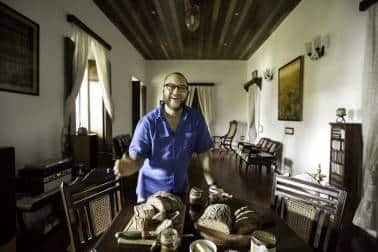 Sujit Sumitran.
Sujit Sumitran.
Unusual, since India had not warmed up to sourdough in the past. The bread was seen to be too expensive, too dense, too time-consuming to bake, not easily available, and as Sujit Sumitran, Goa-based entrepreneur, home baker and host of sourdough baking workshops say, “We have culinary traditions with all kinds of bread in India, each as flavourful as the other. Also, we have grains that are better suited for flatbreads rather than leavened bread like sourdough.”
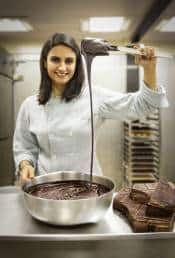 Kainaz Messman.
Kainaz Messman.
Kainaz Messman, founder of Theobroma in Mumbai, one of the few bakeries and cafes which commercially produce and sell sourdough says, “Besides, sourdough techniques are used in bread such as laadi pav, Khameeri naans and Goan poi or poee in India.” Also, Indians like eating their bread soft and toasted, Chef Sanjana Patel, Creative Director of Le Folie, a French patisserie in Mumbai, believes. “In sourdough, the crumb is a little dense and crusty and sometimes, it can be difficult to chew.”
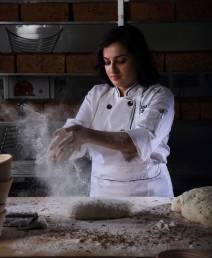 Aditi Handa.
Aditi Handa.
Aditi Handa, co-founder and chief baker of The Baker’s Dozen, takes a differing view, “A big myth about sourdough is its association with expensive, crusty and limited-end-use bread. When customers see bread which visually is very different from the soft-square bread they are used to, they find it daunting. It requires on-the-ground customer education to help them understand that sourdough can be used the same way as any other bread.”
Here is our guide on how to bake a mean loaf, attend workshops online, or buy one once the lockdown ends. For the basics first:
What is it about sourdough that has the bakers excited?
Considered the gold standard in baking, sourdough is the closest you can get to the ancient form of bread making, says Sumitran, who began baking while he still lived in Bengaluru. “It fits right into the slow food trend. There is so much of history and culture backing it.”
 Sanjana Patel.
Sanjana Patel.
There are lesser-known details about sourdough to back its exalted status. For instance, in the early 20th century, California Klondike gold miners or the trappers and miners of Alaska were known as ‘Sourdoughs’ because they carried the starter in their backpacks.
A fascinating story about notes written by an Alaskan miner’s son reveals how every miner's cabin had a tin full of fermented dough hanging over the hot stove and how they slept with their starters close to their body, to keep them from freezing in the frigid climate.
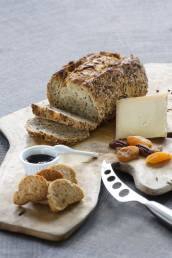 Historians have traced sourdough to ancient Egypt and believe that its discovery was quite a by providence when bread dough left out attracted good microorganisms or the wild yeast. At the Puratos Center for Bread Flavor in Belgium, the refrigerated shelves hold over 150 sourdough starters, some said to be over 500 years old.
Historians have traced sourdough to ancient Egypt and believe that its discovery was quite a by providence when bread dough left out attracted good microorganisms or the wild yeast. At the Puratos Center for Bread Flavor in Belgium, the refrigerated shelves hold over 150 sourdough starters, some said to be over 500 years old.
The world has been obsessed, since then, with the sharp aroma and the tangy, nutty, sour taste of sourdough.
The process
Chef Neeraj Tyagi, Director of Culinary, Pullman & Novotel New Delhi Aerocity defines sourdough as bread with “a strong taste due to its lactic acidosis. Also, it's a very traditional type of dough made with rye flour and natural yeast traditionally.” All this naturally fermented bread needs is flour (wheat or rye), water and oodles of time, though you can add seeds and herbs to it.
All sourdough recipes begin with a starter — a blend of flour, water and a little sugar. You can buy the starter from one of the online sources (though you may not find it at the moment). However, it can be made from scratch. Sumitran says, “You mix flour and water and develop it over a week, constantly feeding it, throwing out 75 percent of the old starter and feeding it again. Every time you feed it, it rises, maintains the height for a while and then drops. I use special flour for bread from TWF Flours, which is a blend of ancient wheat, modern wheat and some amount of barley.”
 Messman advises that you use strong bread flour and mineral balanced water at the correct temperature for the best result. “You have to create an environment for your starter to grow,” she says, a process that can take anywhere between 36 hours and five to seven days. According to Chef Patel, the process of fermentation creates natural enzymes and bacteria, which are good for the gut and gives the starter its sour smell.
Messman advises that you use strong bread flour and mineral balanced water at the correct temperature for the best result. “You have to create an environment for your starter to grow,” she says, a process that can take anywhere between 36 hours and five to seven days. According to Chef Patel, the process of fermentation creates natural enzymes and bacteria, which are good for the gut and gives the starter its sour smell.
Once the starter is ready, you need to mix it with more flour and water, knead it for a certain time and then when it rises, put it away in the refrigerator overnight. Next day, you bake the bread. “The dough changes in very subtle ways and if you have not spent enough time baking it, you may miss those subtle changes,” says Sumitran.
Mastering the process
Each loaf tells a story, every batch is slightly different, part of it is in your control and some part of the process is not, believes Messman, who rhapsodies about the starter as a living entity. “You have to care for and look after your starter like a pet or child. But it can be quite forgiving too. The smell of sourdough coming out of the oven is the most romantic fragrance in the world. “
Anita Tikoo of Delhi-based Mad Tea Party, who writes and hosts workshops on sourdough and fermented food, calls baking it a meditative process. “You prod it, fold it, gently rest it and go back to it. The final bread is bursting with flavours. While the process is not complicated, it takes a lifetime to become a master. Over time, you learn to be mindful of what you are doing.”
According to Handa, sourdough is high on hydration, which makes the dough sticky. “Dealing with sticky dough and very gently handling it with the same sensitivity as one would handle a newborn baby is an art and takes a lot of practice and desire to perfect.”
Baking a sourdough can also be a temperature-dependent process: the same processes take a little longer during winter, than in summers, reveals Tikoo. Sumitran insists that depending on the flora and fauna of the region you are in, the flavours could also be different.
 According to Messman, there is no one right way to bake sourdough. Once you have determined what kind of starter you are going to use, you need to give it a nice long slow knead. “Sourdough must be allowed to autolyse; the water and flour need to be blended and then allowed to rest for some time. This is followed by bulk fermentation, weighing, shaping, final proofing, scoring and then baking it at the right temperature.”
According to Messman, there is no one right way to bake sourdough. Once you have determined what kind of starter you are going to use, you need to give it a nice long slow knead. “Sourdough must be allowed to autolyse; the water and flour need to be blended and then allowed to rest for some time. This is followed by bulk fermentation, weighing, shaping, final proofing, scoring and then baking it at the right temperature.”
Nutritionally, sourdough is streets ahead of every other bread. “It is versatile with international cuisine due to its flavour, texture and nutritional content,” says Chef Patel. Tikoo recommends trying it with Indian food such as arbi ki tuk or roasted baingan bharta for that extra edge.
Learn how to bake or where to buy a sourdough
 Selvan Thandapani.
Selvan Thandapani.
Most bakers such as Selvan Thandapani, who runs the Sour House in Bangalore, began at home, baking one loaf a week before it hit them that they could make a business out of it. Thandapani set up Sour House two years ago and retails it through their store, Nature’s Basket outlets, and by subscription through their website or their WhatsApp group. “Before the lockdown, we were making 300 to 400 loaves every week, including variations such as olive and rosemary,” he says.
Chef Patel says there are several niche bakers, boulangeries and food stores where you can buy a sourdough, such as La Folie Lab in Mumbai, Natures Basket outlets and Sour House in Bangalore. Bakers such as Sujit Sumitran (https://sujitsumitransourdough.zenler.com/courses/), Anita Tikoo (Instagram: @a_madteaparty), Sour House (@sourhouse_india) and Chef Sanjana (Instagram @chefsanjana) host offline workshops but are right now offering online workshops and videos on how to make the starter, fold and knead the bread, and bake it.
Commercially, some restaurants sell more than plain sourdough. Out of the Blue and Deli by the Blue in Mumbai sells a popular Rye sourdough, says Chef Juliano Rodrigues. “I am also experimenting with Italian herbs in the sourdough while at home,” he adds. “We buy the culture from the market because what we are looking for is the right consistency, and we bake around 15 portions a day.” In Delhi, Café Pluck at Pullman New Delhi Aerocity serves authentic sourdough with European, Italian and Indian fare.
Recipe courtesy Chef Neeraj Tyagi, Director of Culinary, Pullman & Novotel New Delhi Aerocity
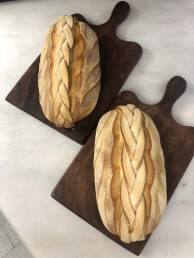
For the starter
Discover the latest Business News, Sensex, and Nifty updates. Obtain Personal Finance insights, tax queries, and expert opinions on Moneycontrol or download the Moneycontrol App to stay updated!